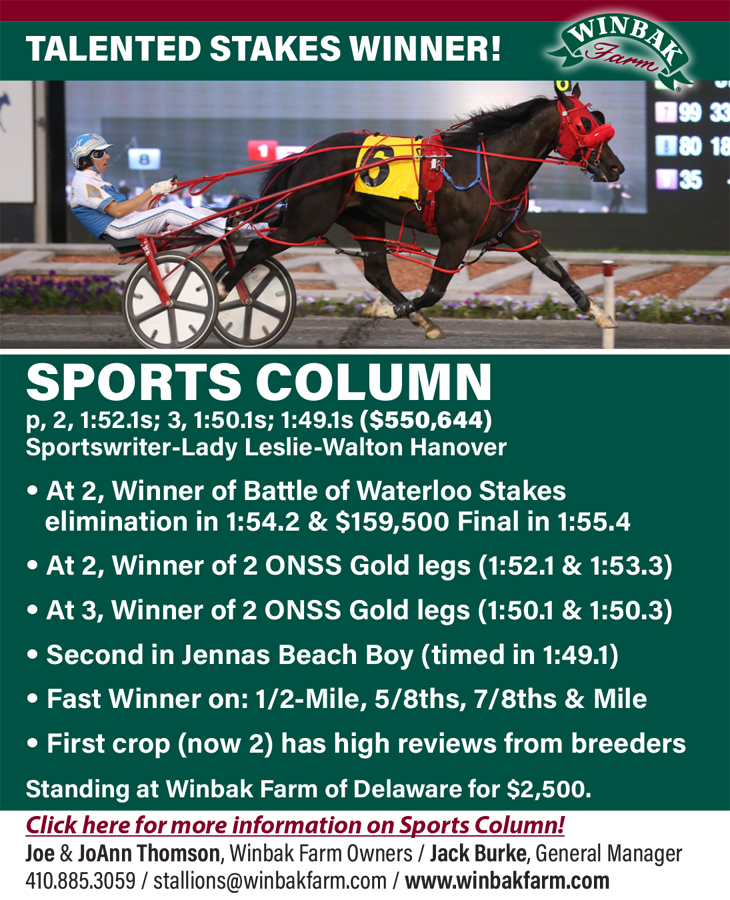Racing recession in Illinois
The Illinois Racing Board’s 2022 annual report details some grim figures.
by Neil Milbert
Illinois racing is in the grips of its version of The Great Depression.
The Illinois Racing Board’s annual report for 2022 attests to the severe hit both thoroughbred and harness racing have taken as a consequence of the decision by corporate overlord Churchill Downs, Inc. (CDI) to permanently shut down the state’s showcase thoroughbred track, Arlington International Racecourse, after its 2021 meeting.
The closure left dual-purpose Hawthorne Race Course as the Chicago metropolitan area’s only racetrack.
A massive gambling expansion bill in 2019 legalized casino gambling at Illinois racetracks and in 2020 Hawthorne began demolition work to convert the facility into a $400 million racino that would earmark a portion of its adjusted gross revenue for harness and thoroughbred purses, making it the equivalent of President Franklin Roosevelt’s New Deal that pulled the U.S. out of The Great Depression.
It has been estimated that the racino subsidy would pour as much as $12 million into the harness purse account that last year distributed $8,353,753.
But the reconstruction project at the family-owned track has been stalled by a combination of the COVID-19 pandemic, inflation, high interest rates and supply chain problems and it’s uncertain that the racino that was originally scheduled to open in 2021 will be ready to open in 2024, which is Hawthorne president Tim Carey’s current projection.
On March 23, a group of wealthy investors known as Greenway Entertainment Group told the Illinois Senate Executive Committee that they want to build a $300 million harness track and casino on an 84-acre site they have under contract in south suburban Richton Park.
However, there is a statutory roadblock: the site is less than 35 miles from Hawthorne and state law stipulates that no racino can be built within 35 miles of an existing track without that track’s permission. It is highly unlikely that Hawthorne would give its approval, so a change in the statute appears to be the only way for the Richton Park racino to become a reality.
“Unfortunately, there’s nothing new to report on that group’s proposal and nothing new to report on Hawthorne [and its racino project],” Illinois Harness Horsemen’s Association executive director Tony Somone said. “Nobody can force Hawthorne to move any faster.”
In the meantime, the ongoing attempt to control the damage caused by CDI wiping palatial Arlington off the racing map is ongoing as the Illinois Harness Horsemen’s Association, the Illinois Thoroughbred Horsemen’s Association and Hawthorne continue the time-sharing arrangement they instituted in 2021 under a different format in 2022.
This year, the thoroughbreds began their 68-program meeting on March 5 and will continue racing through Sept. 4 after which there will be a 49-night harness meeting from Sept. 9-Dec. 31.
It’s the fewest number of Chicago area harness dates since 1948 when Maywood Park — which inaugurated pari-mutuel betting on the sport in Illinois two years earlier — and Aurora Downs conducted meetings. Sportsman’s Park held its first harness meeting in 1949 and during its 23-night stand established itself as one of North America’s foremost tracks.
The all-time high in harness programs was a combined total of 516 in 1995 at Hawthorne, Sportsman’s, Maywood and Balmoral Park.
During 2022, both breeds had split meetings and the standardbreds raced a combined total of 75 nights from Jan. 7-March 20 and from July 2-Sept. 11.
The thoroughbreds raced a combined total of 76 programs from April 2-June 25 and from Sept. 23-Dec. 31.
Wagering declined dramatically and the thoroughbreds were hit the hardest: on-track handle fell from $42,087,645 to $32,296,998; inter-track from $28,019,101 to $10,012,978 and off-track from $135,014,192 to $119,229,648.
Despite the problems posed by the reconstruction project there was a slight increase in on-track harness betting, going from $7,563,903 to $7,927,725. But inter-track betting decreased from $5,208,306 to $1,831,057 and off-track from $38,990,211 to $31,642,160.
The impact of the construction is reflected in the attendance figures: live attendance totaled 12,955, a daily average of 199 customers.
Contrast these paltry crowds with those at the milestone 1979 meeting at Sportsman’s where the average nightly attendance for 99 programs was a robust 13,136 and the average nightly handle was an Illinois record $1.6 million.
The 2022 disparity between out-of-state simulcast handle flowing into Illinois thoroughbred and harness pools ($122,014,892) versus Illinois betting on out-of-state races ($495,442,324) produced a negative trade balance of $373,427,522, the worst bottom line since full-card simulcasting was introduced in Illinois in 1995.
Thoroughbred racing had a staggering unfavorable trade balance of $78,036,993, while the harness vital statistics showed an unfavorable balance of $10,350,122.
When full-card simulcasting was legalized track owners considered it a godsend, rationalizing that it would bring more bettors to the tracks and OTB locations and that there conceivably could be an increase in wagering on Illinois races.
But that wasn’t the case. In 1994, Illinois’ handle on Illinois thoroughbred and harness races totaled $1,181,911,128. The next year, with competition from out-of-state races, it dipped to $872,357,128 and the nosedive has accelerated with the passing of time, hitting a low of $9,977,368 in 2020 when COVID-19 restrictions were a significant factor.
In 2021, the total went up to $30,898,752 but, with Arlington out of the picture, the 2022 total plummeted to $12,142,952, except for 2020 by far the lowest bottom line since full-card simulcasting made its debut.
Exacerbating the problem for horse people has been purse recapture, a 1995 provision of the law permitting full-card simulcasting. It allows tracks to recoup losses on live handle caused by competition with races from other states. The recapture amount is 2 per cent of the decrease in Illinois handle on Illinois races from the 1994 amount and it has produced a steady and significant drain on purse accounts.
The recapture amounts have ranged from $15,489,017 in race year 2001 to $6,774,554 last year.
The handles used in the recapture calculations are from racetracks and OTB locations and don’t include advance deposit wagering, which has emerged as the primary form of wagering in Illinois since its authorization in mid-October 2009. Last year, it accounted for 61 per cent of the betting. OTB locations were second with 29 per cent followed by on-track with 8 per cent and inter-track with 2 per cent.
A total of $2,084,496 was wagered via ADW (a daily average of $32,069) on the Hawthorne harness races and a total of $92,511 (a daily average of $13,216) on the seven harness programs at the State Fairs in Springfield and DuQuoin.
Not surprisingly, harness breeders are reacting to the decline in racing days and purse money.
According to Tim Norman, the Illinois Department of Agriculture bureau chief who oversees the harness and thoroughbred breeding programs, as of May 9 “on the harness side we’re 108 foals behind last year when we had about 540 live foals.”
“I’m guessing we’ll have about 450 this year,” Norman said. “I’m fearful next year’s numbers [of mares bred] will be way down. Look at 2018 [before the gambling expansion bill that laid the groundwork for racino subsidies to purse accounts], there were only 141 foals born. I’m hoping we don’t fall that far.”
Meanwhile, the slim hope that racing might be revived at Arlington is fading. CDI finalized the sale of the 326-acre site to the Chicago Bears for $197.2 million in February with the stipulation that there would be no racing or casino gambling at the site.
The Bears want to redevelop what was considered one of North America’s most opulent and historic racetracks into a domed football stadium, entertainment complex and mixed-use commercial development at a cost of at least $5 billion. The team recently filed for demolition permits with the Village of Arlington Heights for the purpose of tearing down the track’s grandstand.
Ironically, when the late Dick Duchossois, who rebuilt Arlington into a racing gem after the grandstand and clubhouse were destroyed by fire in 1985, merged the track with Churchill Downs, Inc. in 2000 he did so because he believed joining forces with the most iconic track in North American racing it would perpetuate racing at Arlington.
CDI lobbied for statutory approval to conduct casino gambling at the track but then did an about-face when it purchased a 61 per cent interest in Rivers Casino, the state’s most profitable casino that is located in Des Plaines about 10 miles from Arlington.
Former ITHA president Mike Campbell put the situation in perspective in 2021 when he said: “Churchill spent two decades lobbying Illinois lawmakers to develop a casino at Arlington. But since purchasing a majority stake in nearby Rivers Casino, Churchill has… instead devoted itself to ensuring that Arlington could not become a gaming competitor to Rivers.”
In the process, CDI did enormous damage to both thoroughbred and harness racing. It caused Illinois racing’s version of The Great Depression.
Sadly, precious few Chicagoans are aware of this CDI chicanery. The vast majority don’t realize that a racino subsidy would produce a racing renaissance at Arlington and in Illinois and believe the decision to tear it down is evidence that racing is a dying sport.

















